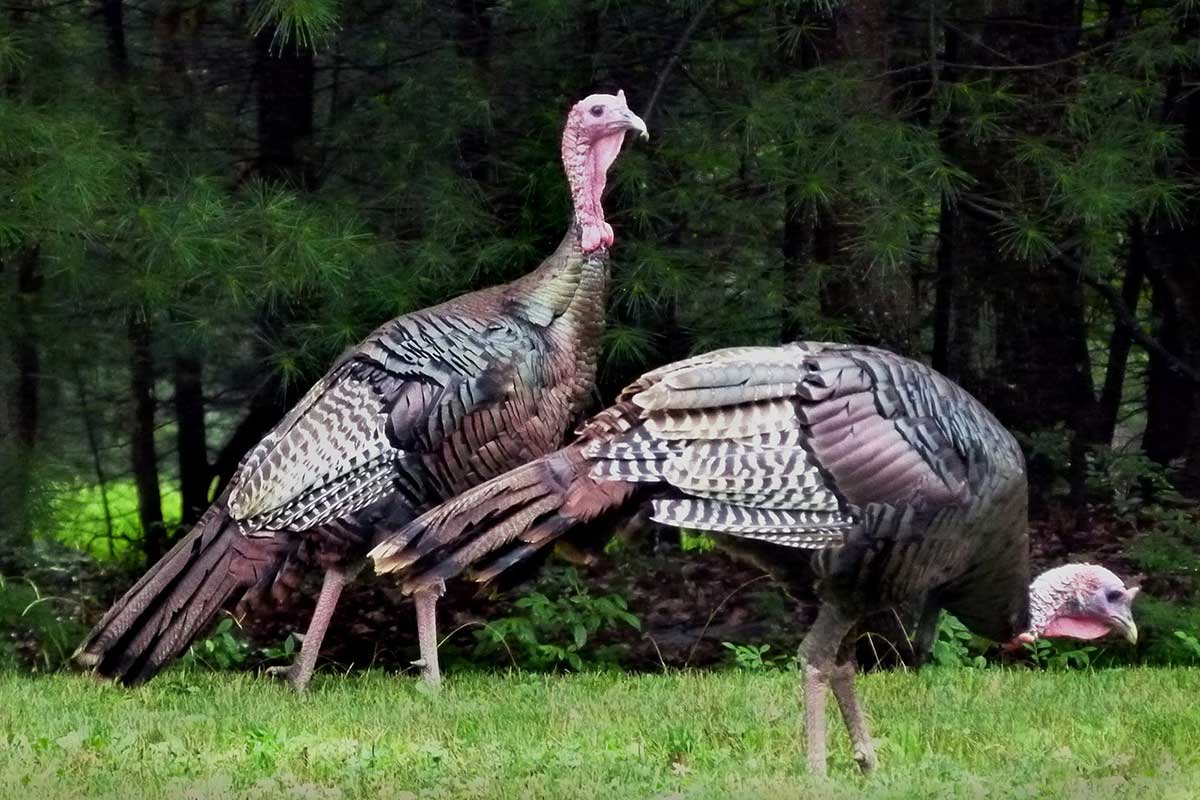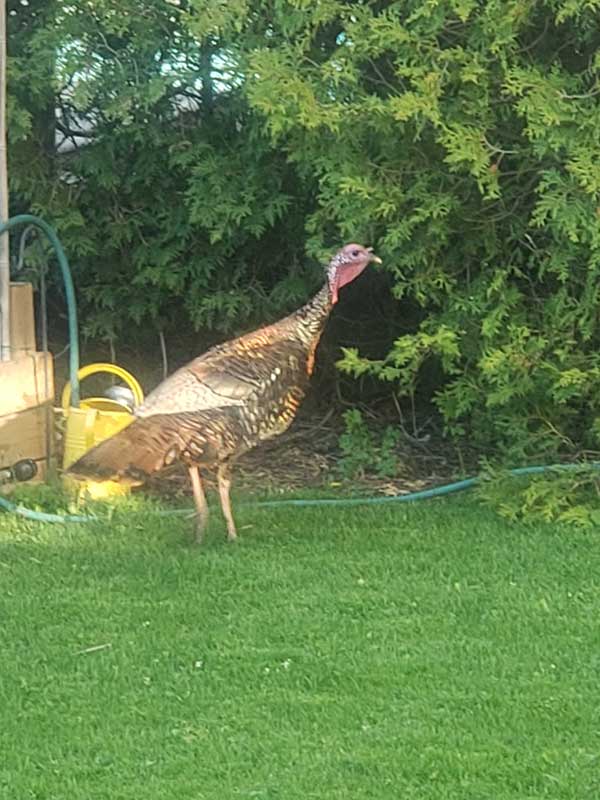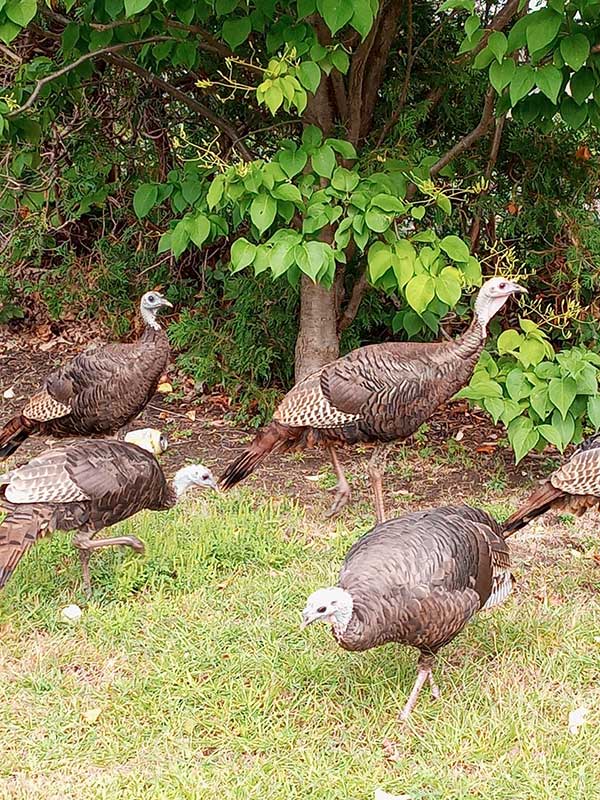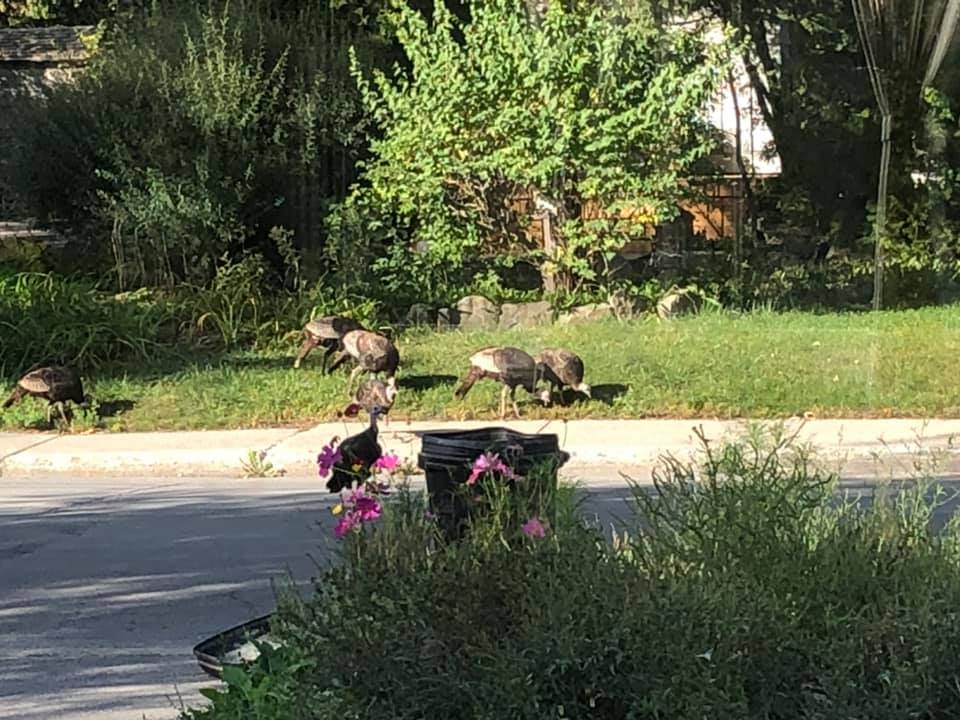After being hunted almost to extinction, resurgent populations of wild turkeys are visiting West Island gardens, and fascinated residents are capturing the moments in photos.

Sonia Ruivo spotted it through her kitchen window during a recent dinner hour. A tall wild turkey had sauntered into her backyard. Ms. Ruivo quickly grabbed her phone and headed into the yard to photograph the unexpected visitor. “The turkey looked at me, but didn’t fly away. It wasn’t frightened. It was eating seeds from our bird feeder,” Ms. Ruivo says.
The Pointe Claire resident is not the only one who has encountered a four-foot-tall turkey in her garden. There have been increasing sightings throughout Montreal’s neighbourhoods in recent years. And that’s good news, according to Elizabeth Landry, a biologist and the coordinator of education at the Zoo Ecomuseum in Ste. Anne de Bellevue. “They were almost hunted to extinction in North America,” she says.
In fact, the birds were practically wiped out by the early 1900s. Conservation efforts in the U.S. and Ontario in the mid-20th century helped the populations to recover, and they’ve been sighted in southern Quebec since the 1970s.
Habitat destruction also contributed to the decline of the species, Ms. Landry says. “As Ontario and the U.S. were reintroducing the birds into the wild, and hunting was limited, their numbers grew,” she says. “And since turkeys don’t respect borders, they’ve come into Quebec. People tell me they’re seeing more and more of them. We particularly see a lot of them in fields in the Vaudreuil and Rigaud areas.”

Wild turkeys are omnivores, dining on seeds, berries, insects and “even little frogs,” Ms. Landry says, adding that they roost in trees at night and forage for food during the day.
And yes, they can fly, but not long distances, so they don’t migrate for the winter.
“They live in harems,” she says. “A strong male will live with several females.”
Pockets of green space throughout the West Island—Terra Cotta, Centennial Park, the l’Anse-à-l’Orme and Cap St. Jacques nature parks, and the Morgan Arboretum among them—all offer habitats for wild turkeys, assisting in the reestablishment of the species.
Ms. Ruivo was uncertain whether the tall, dark stranger in her backyard would be aggressive when she went to photograph it.

“Wild turkeys are not aggressive at all,” says Ms. Landry. “The only time they might be aggressive is if two males are fighting. Otherwise, they’re not a danger to humans.”
Do, however, keep a respectful distance from them, Ms. Landry advises, as with any wild animal. And then enjoy their glorious presence and the fact that wild turkeys are the great “come-back story” of the millennium. We can bid a warm welcome to our beautiful new neighbours.









